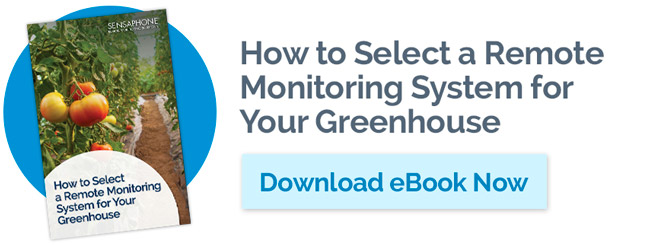
Monitor and control greenhouse humidity
Ventilation and humidity control are key factors when controlling the environment within a greenhouse. Depending on the crop, proper humidity levels are typically maintained between 40%-85% RH. Greenhouse humidity is an essential element in photosynthesis and transpiration of plants.
Low humidity levels mean less water vapor in the air. This causes a plant to lose moisture quicker during photosynthesis or transpiration. During this process, the pores on a plant's leaves will open and take in carbon dioxide.
Moisture will escape at a higher rate when the air around the plant is drier. This can occur faster than the root system’s ability to send water to the plant’s leaves. In time, the plant will shut down and dry out.
Conversely, high humidity levels will also affect a plant’s ability to transpire. When a plant's roots absorb water and minerals from the soil, they are assisted to the leaves by transpiration.
If the moisture content of the air is too high, this process will slow down and the plant will not be able to absorb the proper nutrients. In addition, without the release of moisture from within the plant, it loses the ability to cool itself properly and overheats. Another side effect of high humidity is the reproduction of mold and fungal diseases.
How to control and monitor humidity levels in the greenhouse
Misters, foggers and humidifiers combat low humidity conditions. Contrarily, ventilation fans, dehumidifiers and opening the greenhouse's vents are all effective ways to reduce humidity.
Sensaphone systems are available for monitoring humidity levels in greenhouse environments. These systems continuously monitor conditions in your greenhouse, so you can maintain a healthy living environment for your plants 24/7. In addition to humidity, a single Sensaphone unit can also monitor these conditions:
- Soil moisture content
- Power
- Pumps
- The pressure lines on your misters
- Controller alarm faults
When something goes wrong, users will receive alerts via e-mail, text message or phone call. All Sensaphone systems provide users with a status check. Simply call the device or visit the website for an update.


